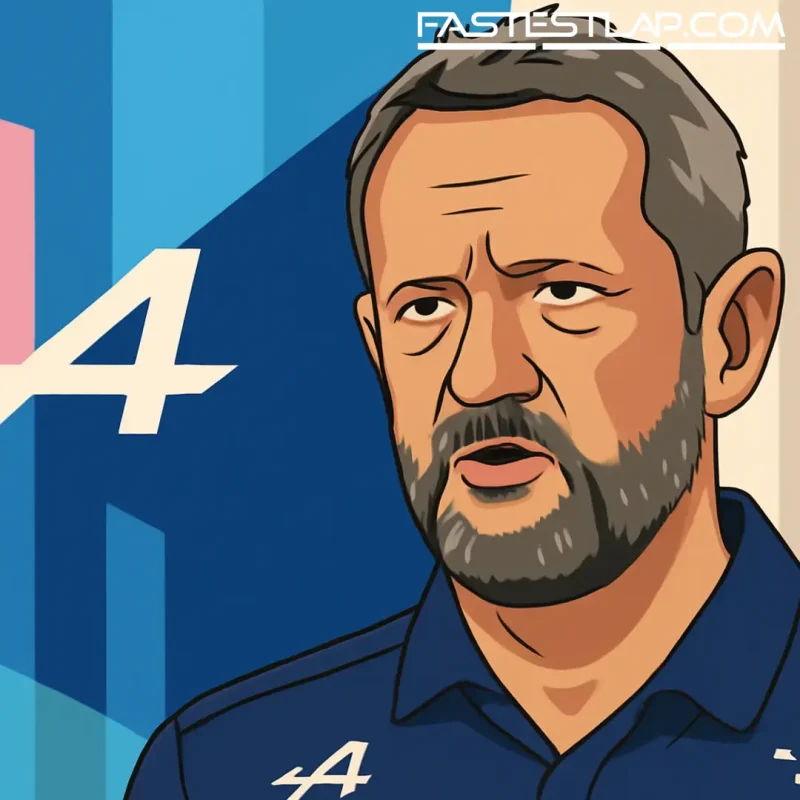Steve Nielsen’s Alpine reset: build the car now, bet on the future
Steve Nielsen has walked back into Enstone with the kind of brief that leaves no room for fluff. The new Alpine managing director, now operating alongside Flavio Briatore, says his priority is simple: make the car better. Everything else, including a radical shift in Alpine’s identity for 2026, flows from that.
“We’ve got great facilities, but the product we’ve put on the track doesn’t reflect the effort of the people here,” Nielsen said in a team video as he outlined his plan. “My top priority is to make sure Enstone produce the best car we can.”
It’s a back-to-basics call at a time of big-picture change. Alpine is moving away from full works status and will run customer Mercedes power units from 2026, ending the Renault-built PU era. For a team majority-owned by Renault, it’s a pragmatic decision with emotional baggage attached — but also a clean sheet to target the next rule cycle with fewer distractions.
The timing matters. Alpine’s 2025 campaign has been a slog, and Nielsen walks into a factory that’s taken its lumps in public. He isn’t promising instant results. In fact, he’s leaning the other way: “You have to have an eye on the future. You have to sacrifice short-term success and invest in the future, and we’re going through that at the moment.”
That future-first tone is classic Nielsen. He’s not a headline chaser; he’s a process guy. His F1 CV stretches back to 1986 with spells at Tyrrell, Arrows and Lotus, and he was Renault’s sporting director through Fernando Alonso’s title years in 2005 and 2006. More recently he’s sat on the other side of the fence with the FIA and Formula One Management, giving him a panoramic view of how the pit lane really works when the cameras are off. That perspective is precisely what Enstone has been short on: clarity, calm, and a plan that survives Monday.
He returns to fill the void left by Oliver Oakes, who exited as team principal after Miami. This isn’t a straight like-for-like swap. Briatore holds the political umbrella, while Nielsen handles the day-to-day football — training ground to touchline, to borrow from another sport. In other words, who does what at Alpine is finally easy to explain.
Nielsen’s message to the factory is equally direct. “I’m a great believer that you find out more about people when things go badly than when things go well,” he said. “There are those people that are willing to dig deep, find an extra gear and keep pushing.” It’s not rah-rah; it’s a gauntlet thrown to a workforce that knows it’s been building below its pay grade.
The Mercedes supply deal should help. It removes the split focus that comes with running your own power unit program, and it lets Enstone funnel cash and brainpower into aero, mechanical grip and integration — the bits that win you Sundays in a cost-cap world. The risk? Identity. Works teams wear their badge on their sleeve; customer outfits have to be better than the sum of their parts. McLaren proved in 2024 and 2025 what that can look like at the sharp end. Alpine’s task is to copy the homework, then improve the handwriting.
For Nielsen, this is also a homecoming. “It’s a privilege to be back,” he said. “This is my home. The biggest part of my professional life has been here; my biggest successes have been here.” That matters more than it reads. Enstone thrives when its leaders feel rooted to the place. The best versions of this team — Benetton, Renault, Lotus — had a spine of lifers who knew where every skeleton and every silver bullet was buried.
And if he needed any reminder of why he traded a comfortable FOM office for the grey hairs of the pit wall, he offered it himself: “I had a great time in F1, but you miss the highs and lows that come with competition… I missed the cut and thrust.”
So, what changes first? Expect process before personnel. Alpine’s facilities aren’t the problem — they’re still among the best in the UK — but the throughput is. Correlation, development rate, race execution: that’s the triangle Nielsen will attack, with 2026’s chassis as the north star and the current car as the live-fire testbed. If it means taking short-term pain to hard-wire better habits, that’s a check he’s already written.
There’s no sugar-coating where Alpine is right now. But a team can be judged by the quality of its decisions when the garage doors are closed. Bringing in a fixer who knows Enstone’s soul, dropping the overhead of a homegrown power unit, and committing to a long game as the rules reset — that’s not a bad start.
Now they have to build a car worthy of the building it comes from.




